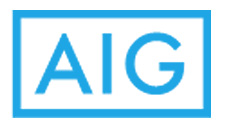The red ink was less than in the year-earlier third quarter, when three hurricanes in a row slammed into the Caribbean and the Southern U.S. Then, the global insurance conglomerate posted a $1.74 billion loss.
Excluding the impact of catastrophe claims, the most-recent results showed modest progress in the company’s goal of earning an underwriting profit in its core business of selling property and casualty policies to corporate clients. The business continued to send more money out the door in claims and expenses than it collected in premiums, and its expense ratio edged up slightly, despite a cost-reduction effort.
But the underwriting loss narrowed in the third quarter under one of the most closely watched metrics, which excludes catastrophes losses.
AIG had forewarned in mid-October about its quarterly catastrophe losses. Analysts said they were significantly above expectations, especially in Japan, and fed a drop of about 13% in the share price over the past several weeks. The swoon far outpaced a broader market decline during the period.
The third-quarter results highlight the struggle of Chief Executive Brian Duperreault to deliver on promises of a return to strong growth. The industry veteran took the top job in spring 2017, and expectations were high that he could deliver the same kind of turnaround he had achieved as Marsh & McLennan Cos.’ CEO from 2008 to 2012. At AIG, he has completed one acquisition, the $5.56 billion deal for Bermuda-based insurer and reinsurer Validus Holdings Ltd.
Mr. Duperreault said AIG’s property-casualty business “continued to make progress” and it remained “on track to produce an underwriting profit.” He added that “we continue to work with a sense of urgency and are taking decisive actions” to improve results.
AIG’s results have lagged behind many of its rivals ever since the global financial crisis of 2008, when the New York-based company received one of the biggest federal bailouts. AIG fully repaid the nearly $185 billion by the end of 2012, cutting itself roughly in half through sales of businesses and individual assets.
The company’s profit margins remain below those of rivals such as Chubb Ltd. and Travelers Cos. In the bailout years, many talented underwriters decamped AIG for rivals, some clients transferred profitable types of policies to other insurers, and AIG grappled with outdated computer systems that have forced large expenditures to upgrade.
Across the industry, Hurricane Florence’s insured losses are expected to tally in the low-digit billions, according to global insurance brokerage firm Aon PLC. Florence landed in North Carolina and caused significant damage in South Carolina and Virginia, too. In Japan, Typhoon Jebi caused nearly 486,000 insurance claims with an estimated multibillion-dollar payout, and Super Typhoon Mangkhut—which caused widespread damage in the Philippines, Hong Kong and China—is expected to approach or even exceed $1 billion in insurance payouts, Aon said.
AIG’s big business of selling life insurance and retirement products posted a 38% drop in pretax income to $713 million. That was driven by a $98 million charge for revised actuarial assumptions, but the unit still delivered a double-digit return on equity.













